
Clematis Vines: Cultivation Tips, Varieties, and Common Issues
Published: 11/04/2024 | Updated: 30/05/2024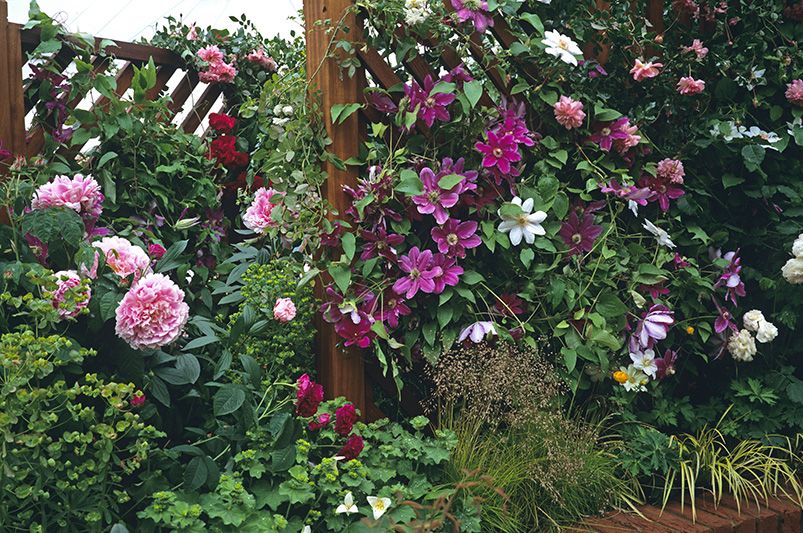
Introducing our comprehensive guide to clematis vines! If you're passionate about gardening and looking to add a touch of elegance and charm to your outdoor space, clematis vines might just be the perfect choice for you. In this article, we'll delve into the world of clematis flowers and plants, exploring their stunning blooms, diverse varieties, and essential care tips. Whether you're a seasoned gardener or just starting, join us on this journey as we uncover the secrets to growing and nurturing these beautiful vines.


And don't forget to check out our weekly articles on Shrubhub blog, where we share expert insights, gardening tips, and inspiration to help you create the garden of your dreams. Let's dive in and discover the enchanting world of clematis vines together!
Growing Clematis Vines:
Clematis vines are renowned for their stunning flowers and graceful growth habits, making them a beloved choice for gardeners worldwide. Whether adorning arbors, trellises, or fences, these versatile plants add a touch of elegance to any outdoor space. Let's explore the key steps to growing clematis vines successfully.
Ideal Growing Conditions:
Clematis vines thrive in partial shade, making them ideal for planting under trees or along fences where they can receive filtered sunlight. Ensure the soil is well-drained and consistently moist, as clematis prefers to keep its roots cool and moist.
Planting and Care Tips:
When planting clematis vine, dig a hole twice as wide and deep as the root ball to allow room for root expansion. Add organic matter to the soil and position the plant so that the base of the stems is slightly below ground level. Water thoroughly after planting and mulch to conserve moisture and regulate soil temperature.
Pruning Techniques:
Pruning clematis vines is essential for promoting healthy growth and abundant blooms. Most clematis varieties fall into one of three pruning groups: Group 1 blooms on old wood, Group 2 blooms on both old and new wood, and Group 3 blooms on new wood. Tailor your pruning routine to suit your clematis variety and its bloom time for optimal results.
Exploring Clematis Varieties:
With a wide range of clematis varieties and cultivars available, there's a perfect option for every garden. From showy flowers in vibrant hues to delicate blooms with intricate patterns, clematis offers endless possibilities for adding color and beauty to your outdoor space.
Exploring Clematis Varieties:

1. Boulevard Volunteer Clematis:
Boulevard Volunteer Clematis (Clematis 'Evipo080') is a stunning flowering vine renowned for its prolific blooms and compact size. With its showy, violet-blue flowers and attractive, glossy foliage, this variety adds a touch of elegance to any garden or landscape. Its low maintenance requirements and ability to thrive in various soil types make it a popular choice for both novice and experienced gardeners.
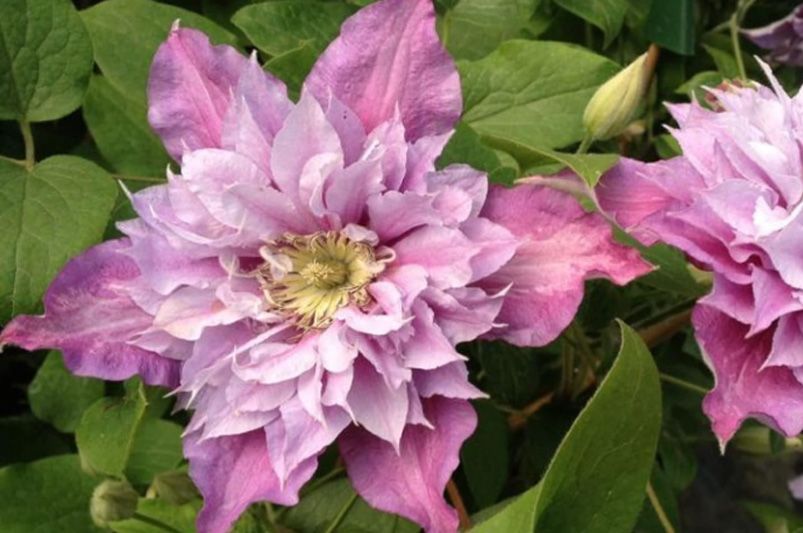
2. Double Rose Clematis:
Double Rose Clematis is a stunning flowering vine that produces large, double blooms in shades of pink and rose. This hardy climbing plant is perfect for trellises, arbors, and fences in full sun to partial shade. It requires well-drained soil and regular watering. With its abundant flowers and elegant vine structure, Double Rose Clematis is a popular choice for landscape and garden enthusiasts.
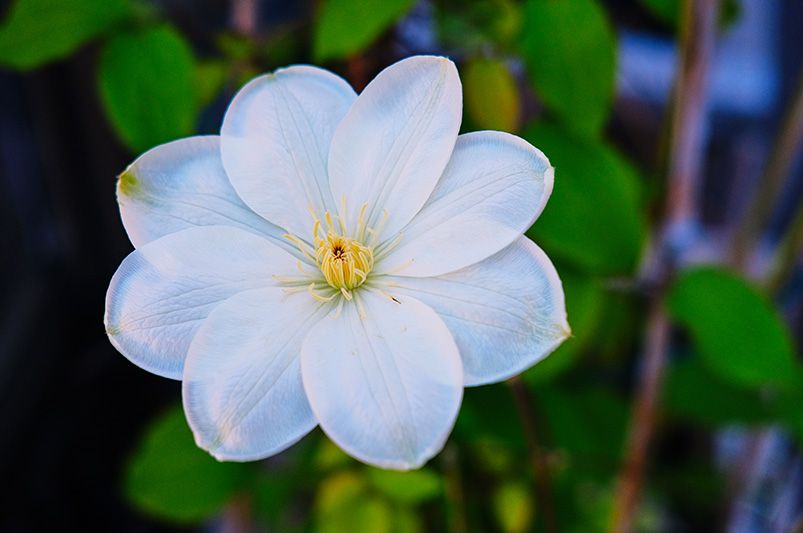
3. Guernsey Cream Clematis:
Guernsey Cream Clematis is a versatile and attractive climbing plant that features large, creamy-white blooms. This variety is easy to care for and can thrive in a range of soil types, making it a popular choice for gardeners. Guernsey Cream Clematis can be used to add vertical interest to a garden, and its delicate flowers make it a great choice for trellises, fences, and pergolas.
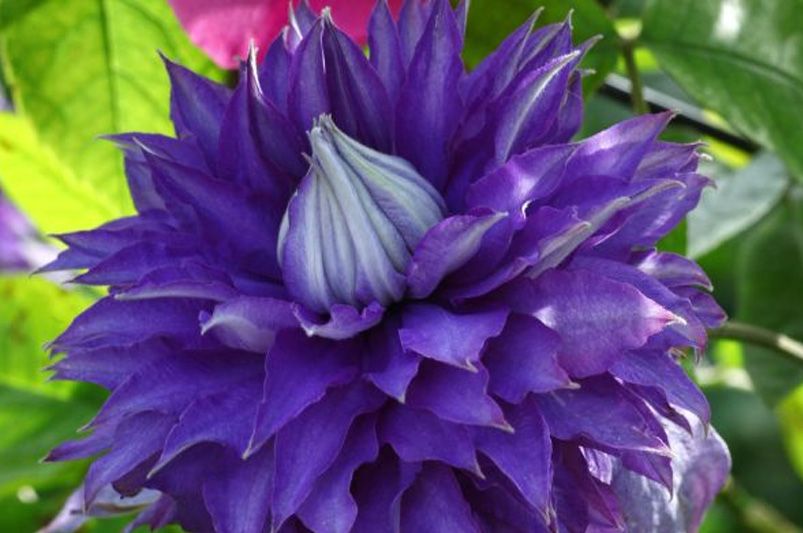
4. Regal Diamantina Clematis:
The Regal Diamantina Clematis (Clematis 'Evipo039') is a popular plant due to its stunning deep purple, velvety flowers. It blooms in late spring to early summer and then again in late summer to early fall. This plant is a great addition to any garden, as it can climb up trellises and fences, adding vertical interest and beauty. It also attracts butterflies and hummingbirds, making it a favored plant among wildlife enthusiasts..
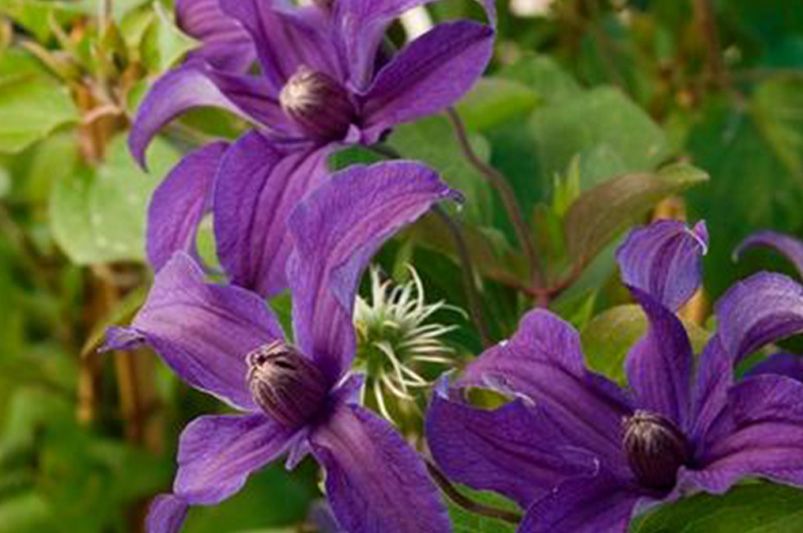
5. Sapphire Indigo Clematis:
Sapphire Indigo Clematis is a stunning vine that produces deep blue-violet flowers from early summer to frost. This cultivar is known for its large, showy flowers and its ability to bloom even in shady areas. The hardy plant thrives in full to partial sun and can be trained up various structures. This clematis is a must-have for any gardener looking for a unique and vibrant addition to their landscape.
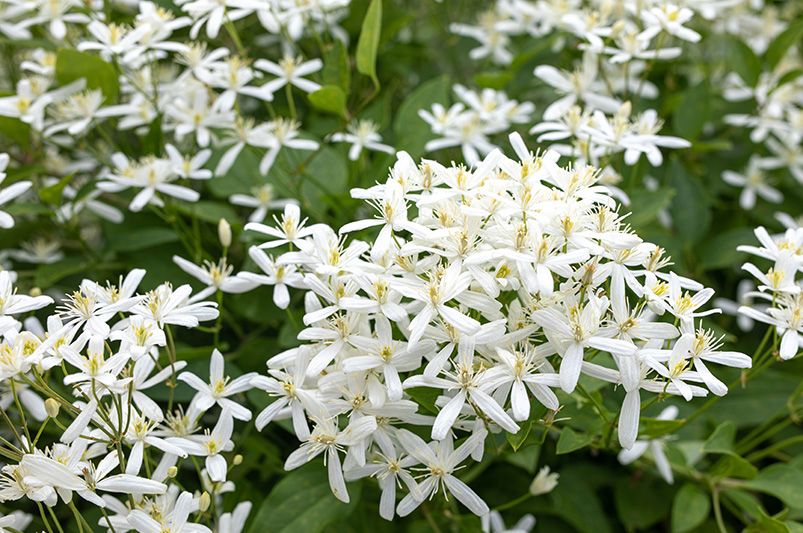
6. Sweet Autumn Clematis:
Sweet Autumn Clematis delights with its profusion of small, fragrant white flowers that cover the vine in late summer and early fall. This vigorous grower is perfect for covering fences, walls, or trellises and adds a sweet fragrance to the garden.

7. Tranquilite Clematis:
Tranquilite Clematis blooms enchant with its soft lavender-blue and delicate, nodding flowers. This graceful variety adds a serene touch to garden landscapes and pairs beautifully with other flowering plants.
Explore our collection of high-quality clematis varieties at ShrubHub's online store and bring a touch of beauty and elegance to your garden. Visit our shop now and discover the perfect clematis for your outdoor space!
Dealing with Common Challenges:
Clematis Wilt and Other Diseases:
Clematis wilt, a fungal disease, can wreak havoc on your prized vines. Ensure proper air circulation around the plants by spacing them adequately and avoiding overcrowding. Keep the soil moist but not waterlogged to prevent root rot, another common issue. If wilt strikes, promptly remove affected plant parts and treat them with a fungicide to prevent further spread.
Strategies for Healthy Growth:
To keep your clematis vines healthy and thriving, provide them with the ideal growing conditions. Ensure they receive sufficient sunlight, preferably in partial shade, and maintain consistently moist soil. Mulch around the base of the plants to retain moisture and regulate soil temperature. Prune regularly to remove dead or damaged growth and promote new growth.
If you encounter common problems while growing clematis, such as poor flowering or stunted growth, consider factors like inadequate sunlight, improper pruning, or nutrient deficiencies. Adjust the growing conditions accordingly, ensuring the vines have access to sufficient light, nutrients, and water. Monitor for signs of pests and diseases, and address them promptly to prevent further damage.
By implementing these strategies and staying vigilant for signs of trouble, you can overcome common challenges and keep your clematis cultivars thriving. Remember to keep the soil moist, provide adequate air circulation, and monitor for signs of disease or pest infestation. With proper care and attention, your clematis vines will reward you with a stunning display of blooms year after year.
Conclusion:
In conclusion, cultivating clematis vines offers gardeners a delightful opportunity to enhance their outdoor spaces with vibrant blooms and graceful foliage. By understanding their unique growing requirements and addressing common challenges proactively, you can enjoy a bountiful display of flowers year after year.
Ready to transform your yard into a botanical paradise? Take advantage of ShrubHub's expert services today! From custom 3D designs tailored to your preferences to free phone consultations with our experienced designers, we're here to help you create the garden of your dreams. Contact us now to get started on your gardening journey!


